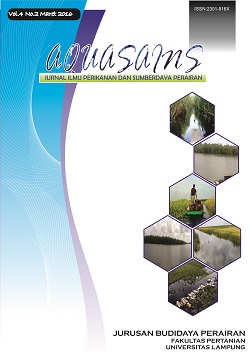Suitabilty Analysis of Polychaeta Habitat in Seagrass Ecosystem, Parang Island, Karimunjawa, Central Java
Abstract
Polychaeta is one of many organisms associated to seagrass bed. To grow optimally, polychaeta needs habitat that suitable to its habit and feeding behaviour. This research aims to analyze polychaetahabitat suitability on seagrass ecosystem at Parang Island, Karimunjawa. The research was held on September 2012, at Parang Island, Karimunjawa. The result shows that the seagrass bed is a mixed community type consisted of 7 seagrass species, and 12 kinds
of polychaeta which Spionidae is the highest in abundance (141 ind.m-2). The result of Principal Component Analysis (PCA) indicates that polychaeta abundance was affected by some factors, i.e; organic material of substrate, graveled and muddy substrate, dissolved oxygen, depth, nitrate concentration, zooplankton, and seagrass percent cover.
Downloads
Download data is not yet available.
Downloads
Published
2016-04-19
How to Cite
Rahman, I. (2016). Suitabilty Analysis of Polychaeta Habitat in Seagrass Ecosystem, Parang Island, Karimunjawa, Central Java. Aqusains: Jurnal Ilmu Perikanan Dan Sumberdaya Perairan, 4(2), 401–412. Retrieved from https://jurnal.fp.unila.ac.id/index.php/JPBP/article/view/1166
Issue
Section
Articles

.png)










